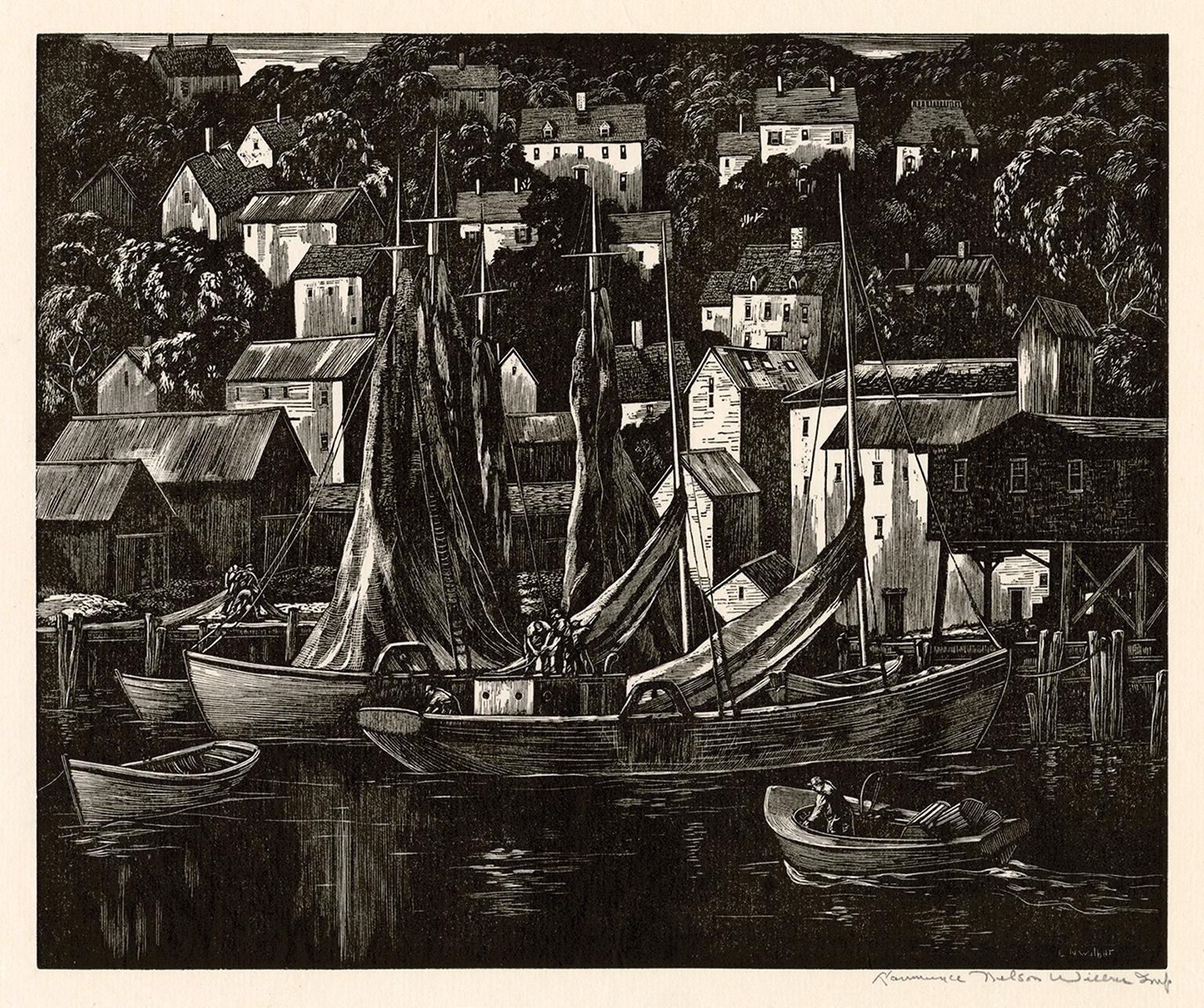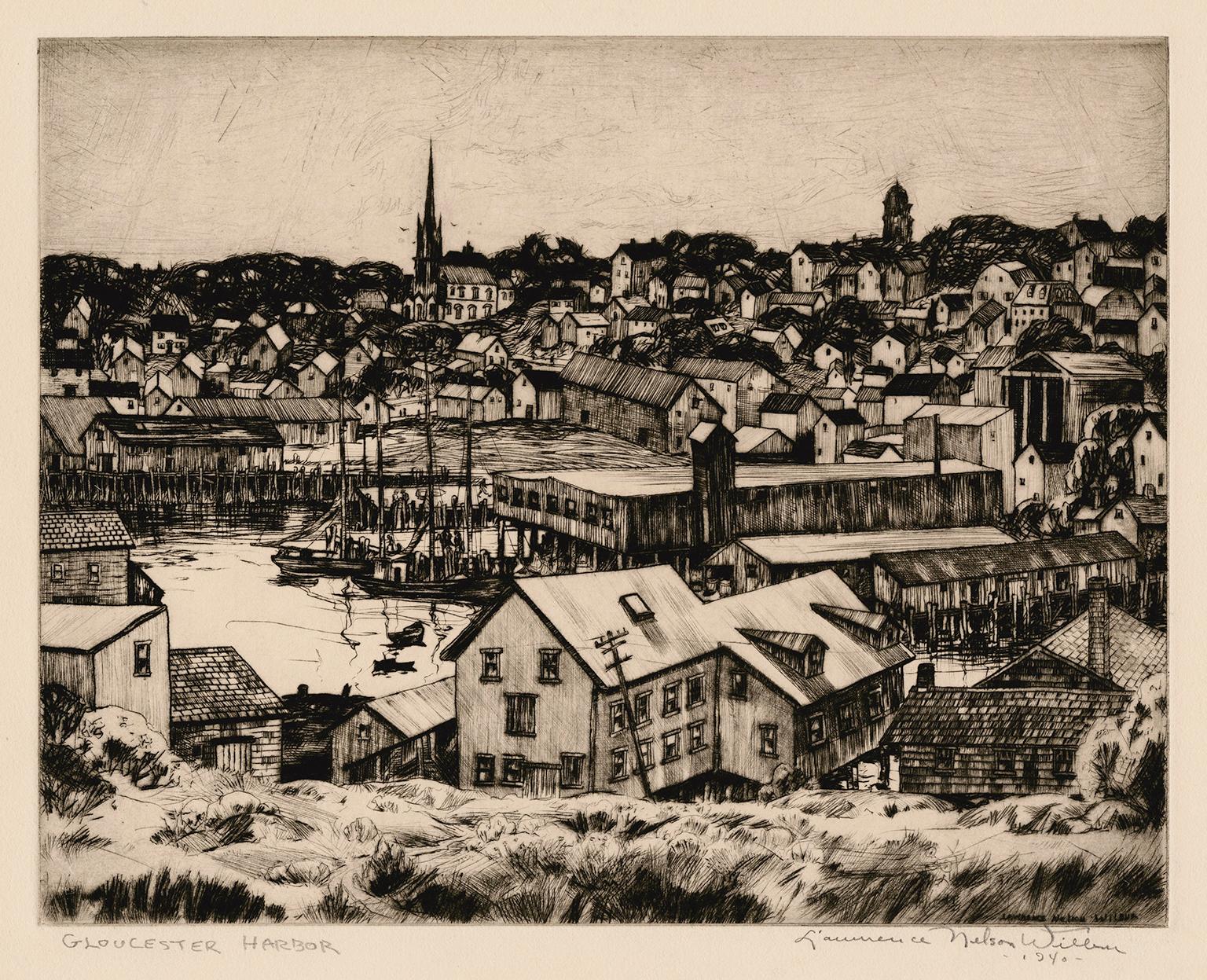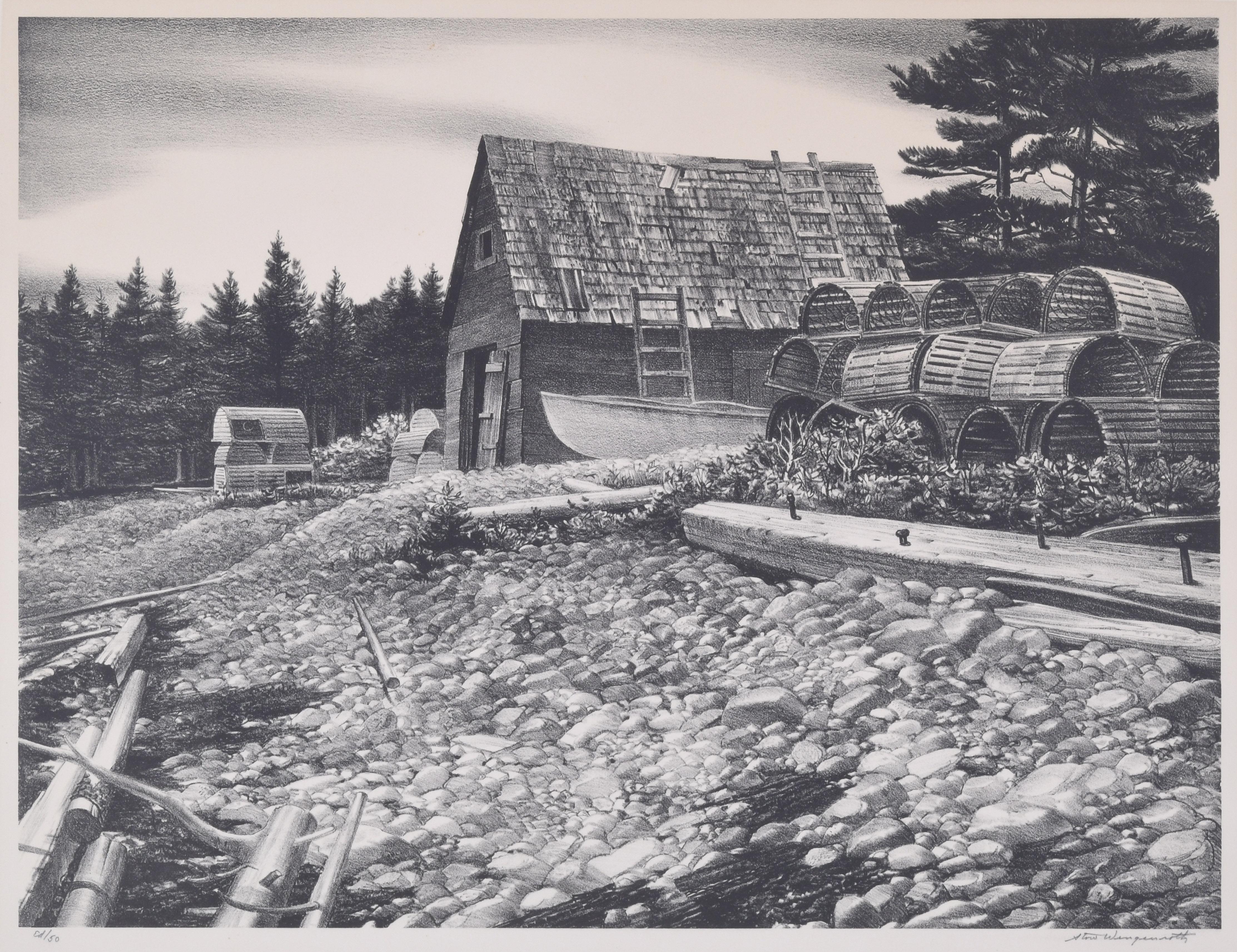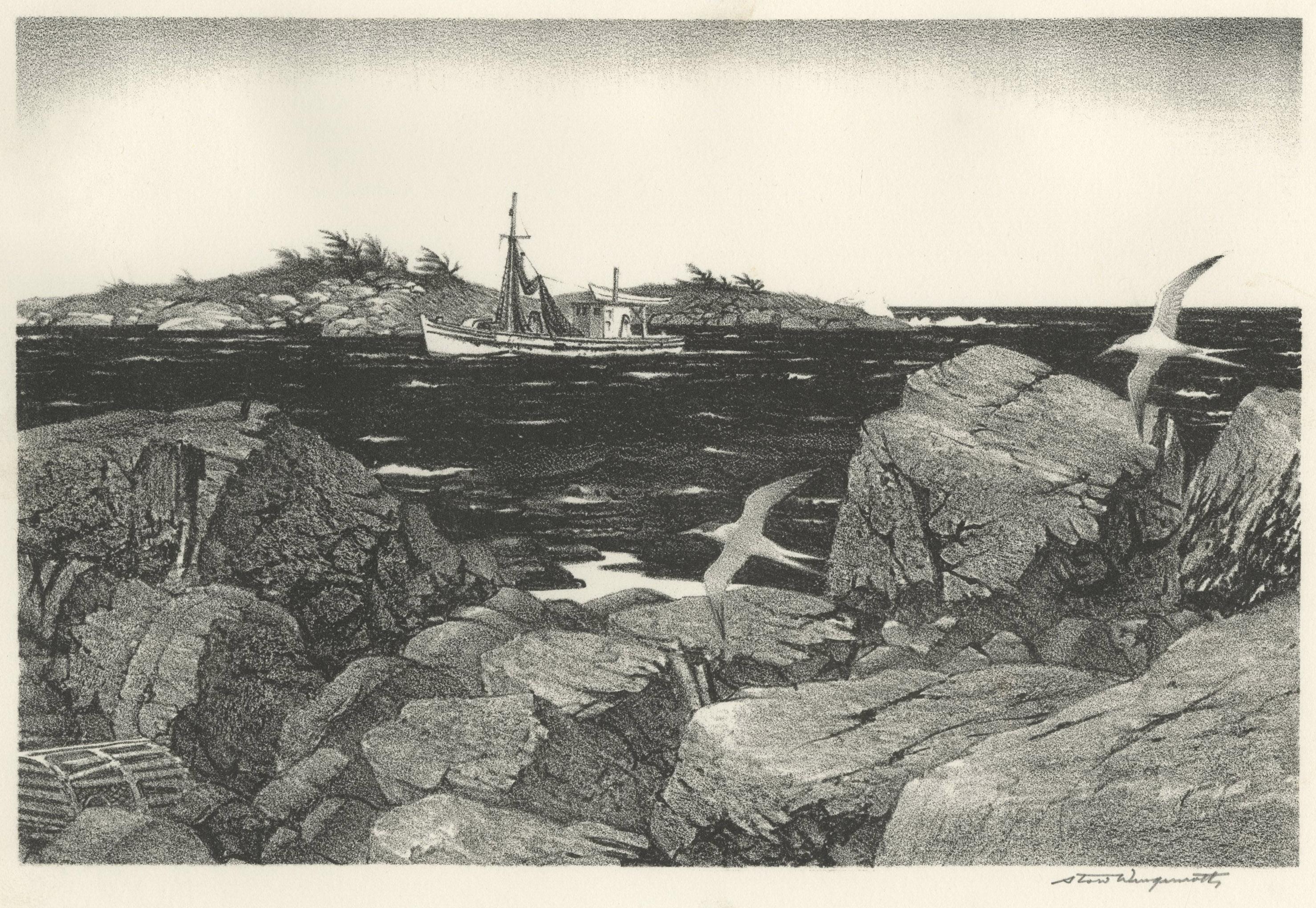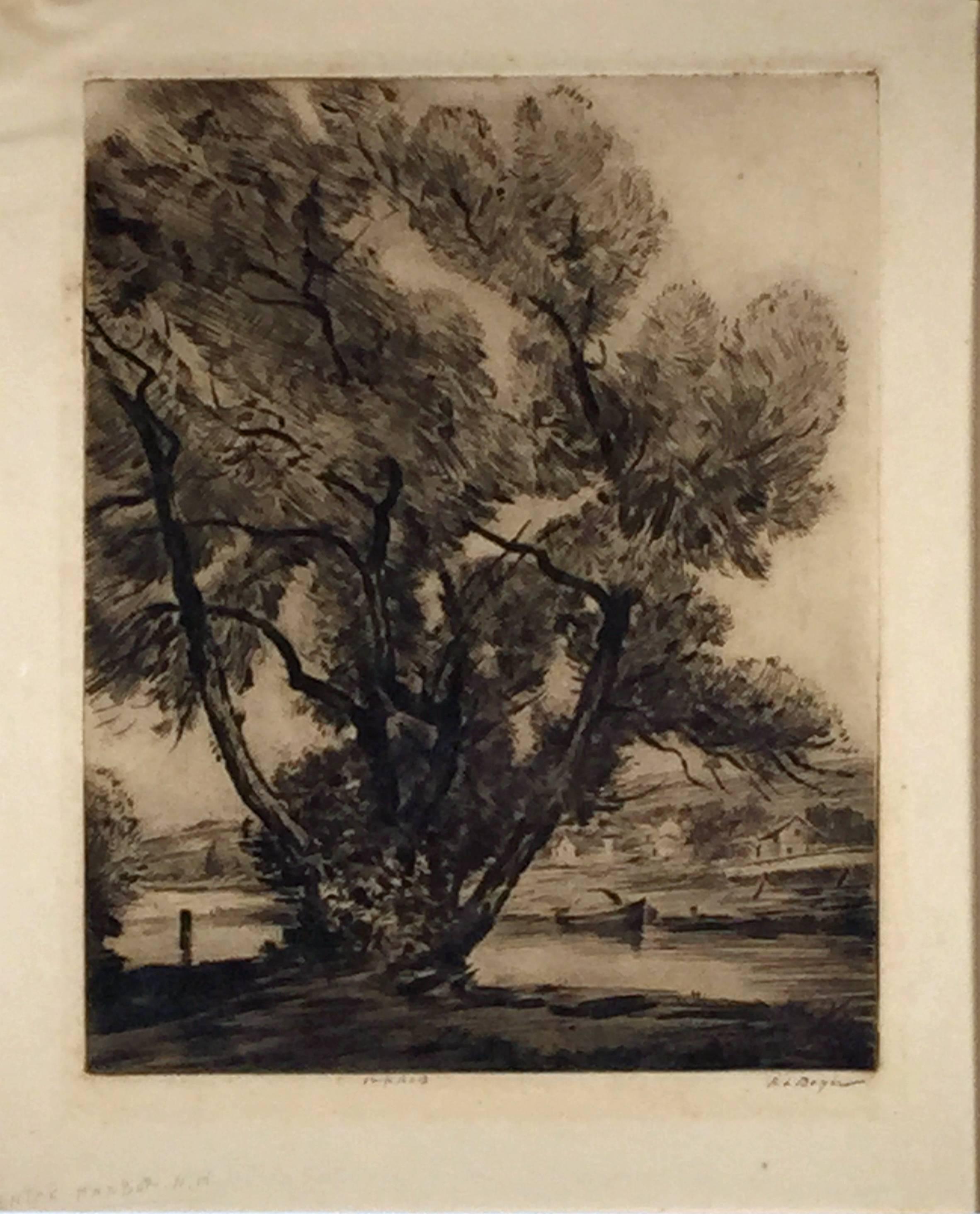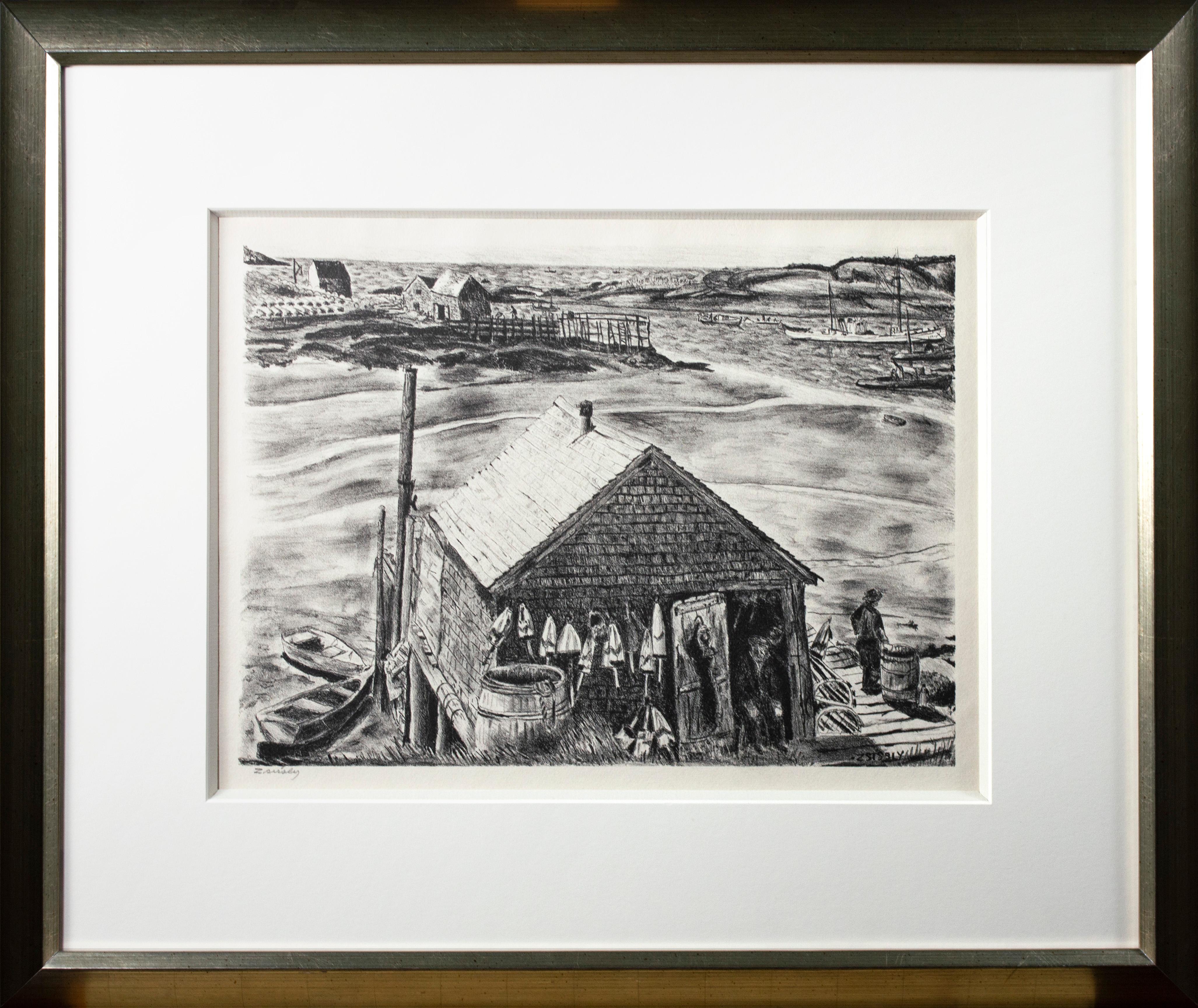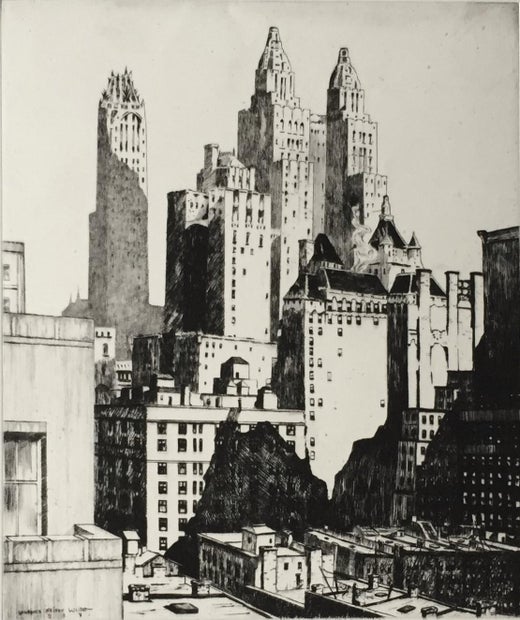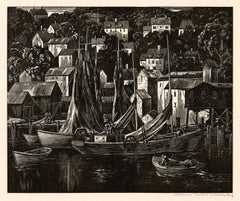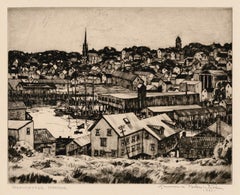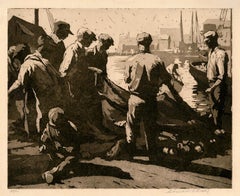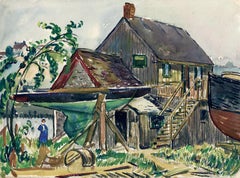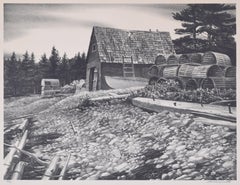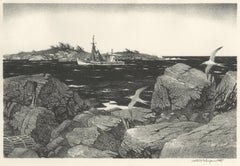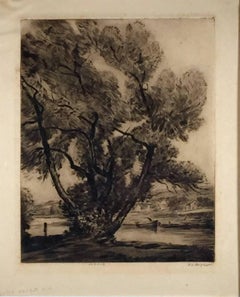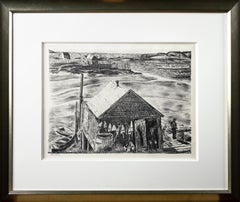Items Similar to 'Sundown, Stonington, Maine' — Artist-printed Exhibition Proof
Want more images or videos?
Request additional images or videos from the seller
1 of 3
Lawrence Wilbur'Sundown, Stonington, Maine' — Artist-printed Exhibition Proof1969
1969
$550
£415.30
€481.83
CA$772.92
A$861.15
CHF 449.56
MX$10,455.45
NOK 5,650.66
SEK 5,341.24
DKK 3,596.84
About the Item
Lawrence Nelson Wilbur (1897-1988), 'Sundown, Stonington, Maine', wood engraving, artist's proof, edition not stated but small, 1969. Signed and titled in pencil. Signed in the block, lower right. Annotated in pencil on the bottom sheet edge, 'OK - EXTRA SPECIAL - ENGRAVED AND PRINTED BY THE ARTIST – EXHIBITION PROOF –.' A superb impression with all the details printing clearly, on cream wove Japan, with full margins (3/4 to 1 1/8 inches), in excellent condition. Printed by the artist. Scarce. Matted to museum standards, unframed.
Image size 5 1/8 x 6 1/16 inches (130 x 154 mm); sheet size 7 1/16 x 8 3/16 inches (179 x 208 mm).
ABOUT THE ARTIST
Painter and printmaker Lawrence Nelson Wilbur's artistic career spanned almost seven decades. A long-time resident of Manhattan, his numerous exhibitions and awards include shows at the Metropolitan Museum of Art (twice), the National Academy of Design (Obrig Prize), the American Watercolor Society (Silver Medal, and Zabriski Purchase Award), the Salmagundi Club (5 awards), and the Society of American Graphic Artists (John Taylor Arms Award).
Wilbur was the subject of a half-hour national broadcast on PBS in 1987, which stimulated renewed interest in his work and a major one-man retrospective, 'Scenes from New York,' at Associated American Artists in New York City.
Wilbur's work is represented in the collections of the Metropolitan Museum of Art, National Gallery of Art, National Museum of Art, Library of Congress, Boston Museum, Philadelphia Museum, Museum of the City of New York, and the New York Public Library.
- Creator:Lawrence Wilbur (20th Century, American)
- Creation Year:1969
- Dimensions:Height: 5.13 in (13.04 cm)Width: 6.07 in (15.42 cm)
- Medium:
- Movement & Style:
- Period:
- Condition:
- Gallery Location:Myrtle Beach, SC
- Reference Number:Seller: 1014121stDibs: LU532313030652
Lawrence Wilbur
Painter and printmaker Lawrence Nelson Wilbur was born in Whitman, Massachusetts. He moved to Boston where he began his training as a photoengraver. He moved to Los Angeles in 1921, where he worked in the engraving department of the Los Angeles Times. Relocating to New York in 1925, Wilbur was employed as a finisher by several of New York's finest engraving shops and by several of the leading magazines of the era. Wilbur enrolled at the Grand Central Art School, where he studied under N. C. Wyeth and Harvey Dunn.a number of Lawrence Nelson Wilbur traveled to Boston and Los Angeles before settling in New York. In 1925, he enrolled in the Grand Central Art School where he studied under Harvey Dunn, N.C. Wyeth, and Pruett Carter. As a photo-engraving finisher, he worked for the finest engraving shops in New York, and a number of major magazine publishers headquartered there. The combination of his graphic arts skills and his serious pursuit of training in the fine arts formed the basis for his career as a talented draftsman, printmaker, and painter. His works have been collected by the Metropolitan Museum of Art in New York; the National Gallery of Art and the Library of Congress in Washington, D.C.; the Philadelphia Museum of Art; and many other institutions. Wilbur received numerous awards for his art, including the Audubon Artist's medal of honor for a self-portrait in oil in 1957. He was a member of the Salmagundi Club of New York, the Painters and Sculptors Society of New Jersey, and the Society of America Graphic Artists. He died in New York City.
About the Seller
5.0
Recognized Seller
These prestigious sellers are industry leaders and represent the highest echelon for item quality and design.
Platinum Seller
Premium sellers with a 4.7+ rating and 24-hour response times
Established in 1995
1stDibs seller since 2016
316 sales on 1stDibs
Typical response time: 1 hour
Associations
International Fine Print Dealers Association
- ShippingRetrieving quote...Shipping from: Myrtle Beach, SC
- Return Policy
Authenticity Guarantee
In the unlikely event there’s an issue with an item’s authenticity, contact us within 1 year for a full refund. DetailsMoney-Back Guarantee
If your item is not as described, is damaged in transit, or does not arrive, contact us within 7 days for a full refund. Details24-Hour Cancellation
You have a 24-hour grace period in which to reconsider your purchase, with no questions asked.Vetted Professional Sellers
Our world-class sellers must adhere to strict standards for service and quality, maintaining the integrity of our listings.Price-Match Guarantee
If you find that a seller listed the same item for a lower price elsewhere, we’ll match it.Trusted Global Delivery
Our best-in-class carrier network provides specialized shipping options worldwide, including custom delivery.More From This Seller
View AllTranquil Harbor (Gloucester, Massachusetts) — 1950s Cape Ann Regionalism
By Lawrence Wilbur
Located in Myrtle Beach, SC
Lawrence Nelson Wilbur (1897-1988), 'Tranquil Harbor' (Gloucester, Massachusetts), wood engraving, edition 55, 1958. Signed in pencil, and signe...
Category
1950s American Modern Landscape Prints
Materials
Woodcut
'Gloucester Harbor' — Mid-Century Cape Ann Regionalism
Located in Myrtle Beach, SC
Lawrence Nelson Wilbur, 'Gloucester Harbor', drypoint, 1940. Signed, dated, and titled in pencil. Signed in the plate, lower right. Annotated 'PERSONAL...
Category
1940s American Realist Landscape Prints
Materials
Drypoint
$520 Sale Price
20% Off
'Mending Nets' — Cape Ann Regionalism, Rockport
Located in Myrtle Beach, SC
Christian Dull, 'Mending Nets', aquatint, c. 1930, edition 50. Signed and numbered '50/-' in pencil. A fine impression, on cream laid paper, the full sheet with margins (1/2 to 1 1/2...
Category
1920s American Modern Figurative Prints
Materials
Aquatint
"East Gloucester, Massachusetts' — Cape Ann Regionalism
By Hayley Lever
Located in Myrtle Beach, SC
Hailey Lever, 'East Gloucester, Massachusetts', watercolor, c. 1930. Signed 'HL' in pencil, lower left. A fine, spontaneous watercolor with fresh colors on off-white watercolor paper...
Category
1930s Impressionist Landscape Drawings and Watercolors
Materials
Watercolor
'Avalon South' —— Mid-Century Modernism
Located in Myrtle Beach, SC
Morris Blackburn, 'Avalon South', wood engraving, 1951, edition 30. Signed, titled, and numbered '12/30' in pencil. A fine black impression on cream wove Japan paper, with wide margins (1 3/8 to 2 1/4 inches), in excellent condition. Archivally sleeved, unmatted.
Image size 5 x 7 inches (127 x 178 mm); sheet size 8 5/8 x 10 7/8 inches (219 x 276 mm).
ABOUT THE ARTIST
Morris Blackburn was a prominent painter, printmaker, and graphic artist, as well as a respected teacher at the Philadelphia Museum School of Industrial Art and the Pennsylvania Academy of Fine Arts.
Born in Philadelphia, where he spent most of his career, Blackburn was a descendant of the notable colonial portrait artist Joseph J. Blackburn (c. 1700–1780). He developed an interest in art early on and studied architectural drawing at the Philadelphia Trade School. In 1922, he took classes at the Graphic Sketch Club and later attended the School of Industrial Art. While working for the well-known Philadelphia furniture designer Oscar Mertz, he studied at the Pennsylvania Academy of the Fine Arts from 1925 to 1929. During his studies, he learned painting from Henry Bainbridge McCarter...
Category
1950s Modern Figurative Prints
Materials
Woodcut
North River Front (Hudson River)
By John DePol
Located in Myrtle Beach, SC
John DePol, 'North River Front', chiaroscuro wood engraving, 1953, edition not stated. Signed, dated, and titled in pencil. Signed in the block, lower left...
Category
Mid-20th Century American Modern Figurative Prints
Materials
Woodcut
You May Also Like
Lobsterman's Cove, Winter Harbor, Maine
By Stow Wengenroth
Located in Fairlawn, OH
Lobsterman's Cove, Winter Harbor, Maine
Lithograph, 1941
Signed in pencil lower right (see photo)
Edition 50
Impressions are in the collection of the Pennsylvania Academy of the Fine...
Category
1940s American Realist Landscape Prints
Materials
Lithograph
New England Coast (Greenport, New York)
By Stow Wengenroth
Located in Fairlawn, OH
New England Coast (Greenport, New York)
Lithograph, 1969
Signed in pencil lower right (see photo)
Edition: 350
Published in the book, Stow Wengenroth's New York, 1969
Limited slipcas...
Category
1960s American Realist Landscape Prints
Materials
Lithograph
CENTER HARBOR, NH
By Ralph L. Boyer
Located in Portland, ME
Boyer, Ralph L. (American, 1879-1952).
CENTRE HARBOR, N.H. Etching, not dated.
Number 12 of the edition of 60. Signed in pencil and inscribed "imp rlb" just below the image.
Further inscribed in the lower margin with the Title, the edition size and number, and the artist's name and "Westport, Conn." where he lived and worked.
9 7/8 x 7 3/4 inches (plate), 13 x 10 1/2 inches (sheet).
Tape residue at the upper corners, else in very good condition.
Boyer was well known as a sporting artist. Derrydale...
Category
Early 20th Century Landscape Prints
Materials
Etching
'Lobsterman's Wharf, Maine' original lithograph signed by "Zsissly" Albright
By Malvin Marr Albright
Located in Milwaukee, WI
'Lobsterman's Wharf, Maine' is an original lithograph signed by Malvin Marr "Zsissly" Albright. While Malvin Marr – along with his better-known identical twin Ivan Albright – was known for his meticulous and unsettling magic realist compositions, he and his brother were also prolific in capturing landscapes of the coast of Maine where the two spent several consecutive summers away from Chicago over their lives. Sometimes these Maine landscapes and views would be painterly and seemingly antithetical to the careful realism of his other work; but in this example, however, the wharf is treated with the same macabre decay as his human subjects. In the composition, the shack...
Category
1940s American Modern Figurative Prints
Materials
Lithograph
EARLY MORNING (BROAD BROOK, CONN.)
By Asa Cheffetz
Located in Portland, ME
Cheffetz, Asa EARLY MORNING (BROAD BROOK, CONN.) Wood Engraving,1929. Springfield 15. Edition of 100, numbered 32/100, titled, signed, and inscribed "imp" all in pencil. 6 x 6 inches...
Category
1920s Landscape Prints
Materials
ABS, Woodcut
Street in Marblehead, Massachussets
By Lawrence Wilbur
Located in Middletown, NY
Drypoint etching on white, buff laid paper with deckle edges, 8 13/16 x 12 inches (224 x 305 mm), full margins. One of only 25 proof impressions. In superb condition with excellent i...
Category
1930s American Modern Landscape Prints
Materials
Archival Paper, Drypoint, Etching
More Ways To Browse
Lawrence Nelson Wilbur
Moran Etching
Owen Bowen
Peter Max Sun
Antique Stone Grinder
Claude Tabet
Corpus Christi College Oxford
Hasui Kawase
Howard Behrens On Sale
Jonathan Green Signed Print
Peter Max Flower Lady
Alex Katz Yellow Flags
Christo Running Fence
Francois Houtin Hermes
Hassam Etching
Hiroshige Bridge
Peter Max Sage
Colorado Ski Poster
